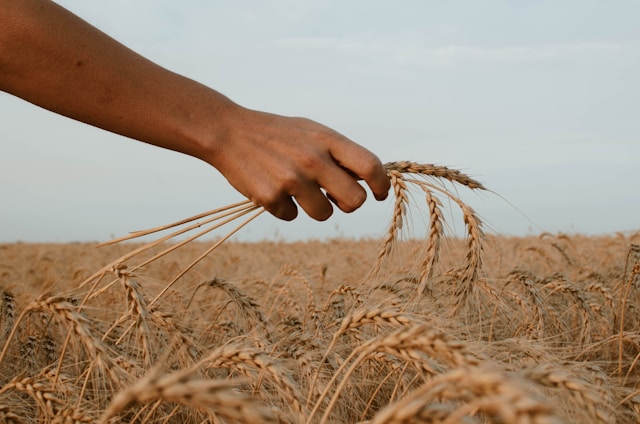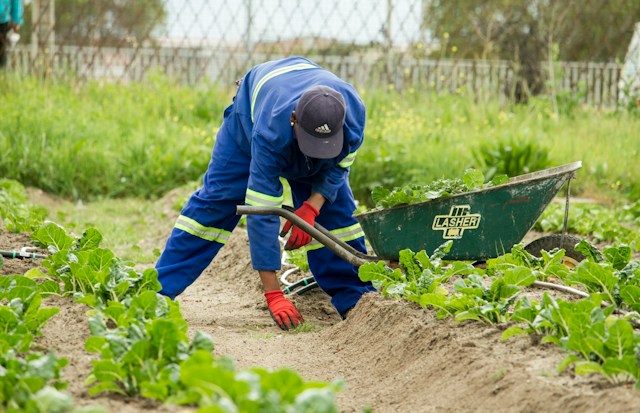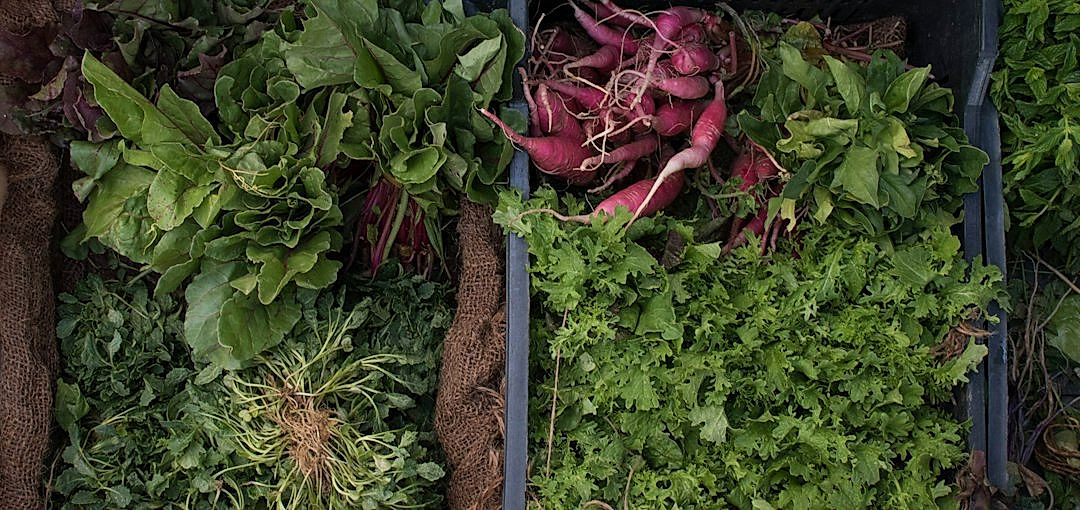In today’s agribusiness environment, ensuring the quality of produce after harvesting is crucial.
The transition from the field to the consumer’s plate poses several intriguing challenges to overcome.
The main objective?
Maintaining freshness, nutritional value, and the overall appeal of the produce.
Effective post-harvest solutions can render a significant effect on the agricultural supply chain, especially in storage procedures.
This blog aims to delve into effective strategies and technologies that can revolutionize the way we store our produce post-harvest.
Contents
Post-harvest Solutions For Better Produce Storage
1. Use Controlled Atmosphere Storage (CAS)
As part of effective post-harvest solutions, it is crucial to use Controlled Atmosphere Storage (CAS).
Understanding the basis of CAS comes as the initial step.
This system works by modifying the atmosphere around the stored produce.
Primarily, it alters the levels of oxygen, carbon dioxide, and nitrogen surrounding the produce in comparison to the regular air composition.
The idea is to create an artificial environment that would slow down the respiration rate of the harvested items, consequently prolonging their freshness.
Therefore, the principal aim of CAS is to maintain the quality of harvested produce by reducing their metabolic rate, and consequently slowing down their ripening process and decay.
Implementing CAS involves the utilization of airtight storage rooms which are climate-controlled.
The levels of gases within these rooms are accurately monitored and adjusted to ideal conditions for the specific type of produce being stored.
This method is highly compatible with various kinds of fruits and vegetables, enhancing their shelf life effectively.
Moreover, the use of CAS helps to maximize the recovery of post-harvest losses, which is a perennial concern for farming businesses.
Adapting CAS method also encourages efficient resource utilization by allowing for storage over longer periods.
Indeed, the CAS system provides an opportunity for businesses to store produce in wait for better market prices, thus increasing their potential profits.
However, it is also essential to note that CAS requires a significant investment in the proper storage equipment and monitoring devices.
Even the smallest changes in gas composition or temperature can significantly affect the success of CAS.
Despite this, the long-term benefits in terms of reduced losses and increased shelf-life make the investment well-worth considering.
Finally, incorporating CAS alongside other post-harvest solutions can lead to an even more efficient and effective storage system for your produce.
2. Implement Proper Humidity Management
One of the most critical aspects of post-harvest storage for produce is implementing proper humidity management.
Humidity plays a significant role in the overall quality and longevity of stored produce. It helps in preventing unnecessary water loss in the stored produce that might cause them to wilt prematurely.
An environment that maintains an optimal humidity level can greatly assist in extending the lifespan of your produce.
Many fruits and vegetables naturally continue to respire after harvest which means they will lose water over time. This can be effectively controlled by maintaining a suitable humidity level.
If the humidity level is too low, excessive moisture loss can cause produce to dry out and lose quality.
On the other hand, if the humidity is too high, it may encourage the growth of bacteria and fungi, leading to decay and loss of produce.
Therefore, it is crucial to implement measures to monitor and adjust the humidity level regularly for best post-harvest results.
Investing in good quality humidity control systems for your storage area can help achieve this. These systems can be paired with sensors that maintain the desired humidity level within the intended range, which is typically between 85% to 95% for most fruits and vegetables.
Using a high-quality humidifier can help sustain the needed level of humidity in your storage. It works by dispersing water into the air to increase the moisture level.
In addition, dehumidifiers can be employed to reduce the excess moisture in the environment when needed, to avoid the rise of harmful fungi and bacteria.
Humidity management can also involve simple strategies, such as storing produce in perforated plastic bags. These bags allow for proper air circulation and also keep the surrounding environment appropriately moist.
In a nutshell, as humidity management is a crucial aspect of post-harvest storage, understanding the correct levels for each type of produce and regularly monitoring it can significantly contribute to better quality and extended shelf life of your stored produce.
Keep in mind that an efficient humidity management system is not just about the right equipment, but also about continuous check and control.
In a professional storage facility, having trained staff who understand the importance of humidity and can manage it effectively is vitally important for successful crop storage.
3. Ensure Regular Temperature Monitoring
Your production’s quality and longevity can be significantly affected by the aspect of temperature control. As such, it is of utmost importance to ensure regular and accurate temperature monitoring.
This process is accomplished via the use of precision thermometers or contemporary technologies such as Wireless Temperature Monitoring Systems (WTMS). These systems provide real-time temperature data and alerts in instances of temperature deviations.
Restocking, rotation, cleaning the store, or even fluctuations outside can cause variations in your storage’s temperature. Thus, it is essential to create a temperature log.
Constant monitoring and recording of temperature fluctuations will be key to ensuring optimal storage conditions for your produce.
Post-harvest losses in fruits and vegetables can be minimized by maintaining the correct temperature in the storage area. Specifically, low temperatures reduce the rate of biological processes and physiological reactions.
An effective temperature monitoring system actually takes into account both humidity and temperature, as they tend to interrelate in preserving the quality and shelf life of produce.
For example, high temperatures can reduce humidity levels, leading to product dehydration. Hence, ensuring temperature correctness also affects the humidity balance in your storage.
Moreover, constant regulation and maintaining the right temperature will not only maintain the quality but also enhance the freshness and taste of your produce. Consequently, it could provide a competitive advantage in the market.
Different kinds of produce have their unique, optimum storage temperatures. For instance, tropical fruits like banana, mango, and avocado have higher storage temperatures than cold-tolerant fruits such as apples, oranges, and plums. Therefore, know the optimum storage temperatures for your specific products.
The location of your storage area, the amount of produce, and the insulation capacity of your storage can affect the accuracy of your temperature readings. It is, therefore, crucial to position your temperature sensors correctly.
Having accurately measured temperature data provides a foundation for identifying any arising issues quickly. Hence, it gives you an opportunity to rectify these issues in a timely manner before they impact the quality of your produce.
Lastly, the benefits of regular and accurate temperature measurement go beyond quality maintenance. It also helps in providing data for improved decision-making, compliance with quality control measures, ensuring consumer satisfaction, and ultimately increasing your profit margins.
Make temperature monitoring an integral part of your post-harvest management strategy for better produce storage. Be it simple thermometers or advanced technologies, implement suitable temperature monitoring systems for your operations.
Remember that proper temperature monitoring is not a one-time task. Instead, it is a continuous and comprehensive process that requires your consistent attention and involvement.
In essence, invest more time and resources in regular temperature monitoring and increase your payoff in the form of better storage, enhanced produce quality, increased shelf life, and higher profits.
4. Usage of Efficient Cooling Systems
Within the ecosystem of post-harvest produce storage, the utilization of an efficient cooling system stands as a critical consideration.
One significant determinant of produce quality post-harvest is temperature management; to be specific, the rapid reduction in the temperature of the harvested produce.
For this reason it is imperative to put in place a robust and efficient cooling system.
The system’s efficiency arises from its ability to swiftly reduce the temperature of freshly harvested perishables to their ideal storage temperatures.
Efficient cooling has the ability to slow down the respiration rate of the produce, hence extending their shelf life considerably.
This ultimately helps to minimize post-harvest wastage, saving both time and money for the producer.
Utilization of efficient cooling systems within produce storage applications can include methods such as room cooling, forced-air cooling, hydro cooling, package icing, evaporative cooling, and vacuum cooling.
Among these, forced-air cooling is often the most utilized method as it offers more advantages, especially when dealing with high respiration products.
It works by removing heat from the produce by forcing cold air to pass over them, thus rapidly reducing their temperature.
The said cooling methods all have different efficiency levels and suitabilities according to the different kinds of produce and their specific temperature requirements.
An efficient cooling system does not simply focus on the ability to rapidly cool produce but should also consider energy efficiency.
Systems with lower energy needs are more sustainable and cost-effective, making these choices more viable for long-term storage operations.
The ability of a cooling system to maintain a constant temperature throughout storage is also an important marker of efficiency.
Constant temperatures help in the consistency of the storage environment and prevent premature ripening or spoilage of the stored produce.
Lastly, the choicest cooling system should be reliable and demand minimal maintenance.
Remember that the goal is to maintain the quality and safety of your produce post-harvest, and an efficient cooling system plays an indispensable role in achieving this.
5. Promote Ethylene Control Methods
Ethylene, a naturally occurring gas produced by many fruits and vegetables, plays a vital role in their ripening process.
However, unregulated ethylene production can lead to over-ripening and the consequent degradation of produce, a major concern in post-harvest storage.
Proper management of ethylene activity is therefore of paramount importance to maintain the quality and extend the shelf-life of stored goods.
Recommended ethylene control techniques include ethylene scrubbers and filters, catalytic oxidizers, and chemical inhibitors, to name a few.
These techniques rely on reducing the ethylene concentration in the storage environment, thereby delaying ripening, deterioration and rotting processes.
For instance, ethylene scrubbers and filters work by physically removing the gas from the storage area.
These devices pass the air through a bed of potassium permanganate, a compound that chemically reacts with ethylene, reducing its concentration.
On the other hand, catalytic oxidizers aid in breaking down the ethylene into harmless substances like carbon dioxide and water.
They achieve this by heating the storage space’s air, thereby triggering a catalytic reaction that destabilizes the ethylene molecule’s atomic structure.
Then, we have chemical inhibitors, which work by blocking the ethylene perception at the produce receptor sites or by interfering with ethylene synthesis,
One such widely-used chemical inhibitor is 1-methylcyclopropene (1-MCP), known to prolong the freshness of several fruits and vegetables.
Moreover, newer technology introduces ethylene removal sachets that can be placed individually with produce, absorbing ethylene and extending their usability.
All said, promoting better ethylene control methods can significantly improve the longevity and quality of produce in storage,
This makes ethylene management an essential aspect of efficient post-harvest storage solutions.
Thereby, investing in its research and creating awareness on its importance and implementation will be a huge step forward in maximizing the benefits of post-harvest storage.
Continued commitment to this cause will help secure the world’s food supply, decrease waste and make a considerable difference to growers, distributors, and consumers alike.
6. Adopt advanced preservation techniques
Storing produce post-harvest can present numerous challenges that require comprehensive solutions.
This includes not only proper temperature management, humidity control, and efficient cooling systems, but also the introduction of advanced preservation techniques.
Preservation techniques have evolved significantly in recent years, featuring cutting-edge technologies and novel approaches that can effectively prolong the quality and shelf life of harvested produce.
Adopting these advanced techniques is crucial for farmers, retailers, and anyone involved in the food supply chain, as it can mean the difference between profit and loss.
One of the advanced preservation strategies that have gained traction is the use of Modified Atmosphere Packaging (MAP).
MAP is an innovative technique where the atmosphere inside the packaging is altered to slow down the degradation process of the produce.
This technique is particularly useful for fruits and vegetables, as they continue to ‘breathe’ post-harvest and this can lead to quicker degradation.
Another excellent technique involves the use of nanotechnology-based coatings or films.
This technique uses materials at the nanoscale to enhance storage properties, including barrier properties against moisture, gases, and volatile compounds.
Such coatings have been found to significantly enhance the storage life and quality of several types of fruits and vegetables.
Apart from packaging and coating technologies, using controlled-release systems for antimicrobial and antifungal agents is also an emerging preservation technique for post-harvest storage.
These systems can release these agents slowly over time, providing ongoing protection for the produce against microbial spoilage and extending their storage life.
Other notable advancements include optical sorting technologies that help to detect and remove defective produce,
the use of edible coatings and films for fruits and vegetables and the application of ultraviolet light for disinfection.
While the specific choice of advanced preservation techniques will depend on various factors, such as the type of produce and the available resources, their adoption can significantly improve the quality and extend the shelf life of stored produce post-harvest.
The Bottom Line
Ultimately, maintaining the freshness and quality of stored produce is a multifaceted process demanding a careful blend of various strategies.
Employing Controlled Atmosphere Storage (CAS) stands out as an utterly instrumental practice.
Particularly when coupled with proficient humidity management, CAS has demonstrated its pivotal role in upholding produce quality.
Additionally, continuous temperature monitoring is an inescapable requirement to forestall spoilage and degradation.
However, optimizing the advantage from temperature monitoring necessitates the application of efficient cooling systems.
Meanwhile, the potency of these systems can be substantially amplified when integrated with Ethylene control methods, pushing the limits of traditional storage.
As the final cog in this machine, adopting advanced preservation techniques presents an innovative means to extend the life of stored produce.
Each of these measures on their own provides significant benefits, but together, they form a robust and comprehensive preservation method that ensures the durability and quality of stored fruits and vegetables.




